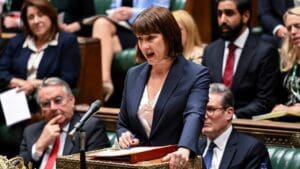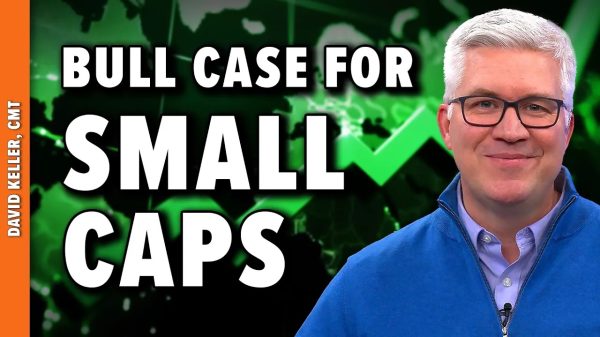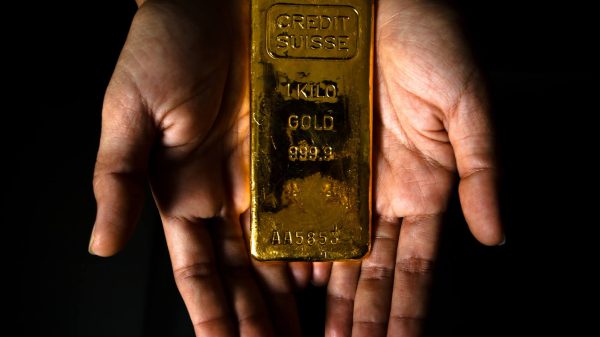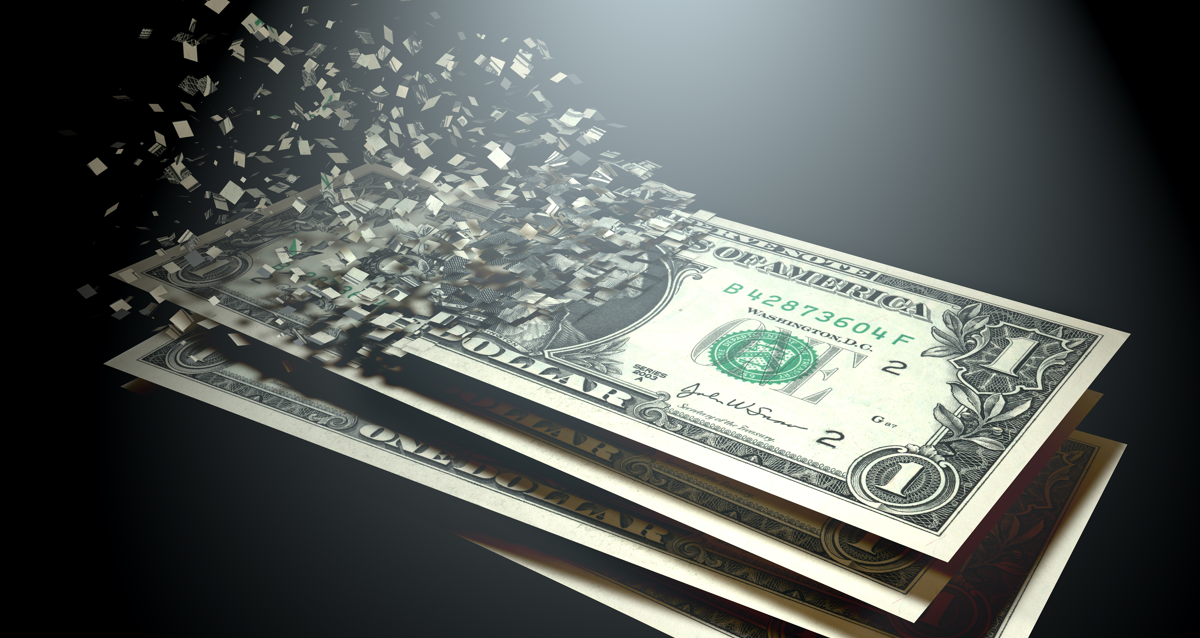To save our economy from destruction and from the eventual holocaust of runaway inflation, we the people must take the money-supply function back from the government. Money is far too important to be left in the hands of bankers and of Establishment economists and financiers. To accomplish this goal, money must be returned to the market economy, with all monetary functions performed within the structure of the rights of private property and of the free-market economy.
It might be thought that the mix of government and money is too far gone, too pervasive in the economic system, too inextricably bound up in the economy, to be eliminated without economic destruction. Conservatives are accustomed to denouncing the “terrible simplifiers” who wreck everything by imposing simplistic and unworkable schemes. Our major problem, however, is precisely the opposite: mystification by the ruling elite of technocrats and intellectuals, who, whenever some public spokesman arises to call for large-scale tax cuts or deregulation, intone sarcastically about the dimwit masses who “seek simple solutions for complex problems.” Well, in most cases, the solutions are indeed clear-cut and simple, but are deliberately obfuscated by people whom we might call “terrible complicators.” In truth, taking back our money would be relatively simple and straightforward, much less difficult than the daunting task of denationalizing and decommunizing the Communist countries of Eastern Europe and the former Soviet Union.
Our goal may be summed up simply as the privatization of our monetary system, the separation of government from money and banking. The central means to accomplish this task is also straightforward: the abolition, the liquidation of the Federal Reserve System–the abolition of central banking. How could the Federal Reserve System possibly be abolished? Elementary: simply repeal its federal charter, the Federal Reserve Act of 1913. Moreover, Federal Reserve obligations (its notes and deposits) were originally redeemable in gold on demand. Since Franklin Roosevelt’s monstrous actions in 1933, “dollars” issued by the Federal Reserve, and deposits by the Fed and its member banks, have no longer been redeemable in gold. Bank deposits are redeemable in Federal Reserve Notes, while Federal Reserve Notes are redeemable in nothing, or alternatively in other Federal Reserve Notes. Yet, these Notes are our money, our monetary “standard,” and all creditors are obliged to accept payment in these fiat notes, no matter how depreciated they might be.
In addition to cancelling the redemption of dollars into gold, Roosevelt in 1933 committed another criminal act: literally confiscating all gold and bullion held by Americans, exchanging them for arbitrarily valued “dollars.” It is curious that, even though the Fed and the government establishment continually proclaim the obsolescence and worthlessness of gold as a monetary metal, the Fed (as well as all other central banks) clings to its gold for dear life. Our confiscated gold is still owned by the Federal Reserve, which keeps it on deposit with the Treasury at Fort Knox and other gold depositaries. Indeed, from 1933 until the 1970s, it continued to be illegal for any Americans to own monetary gold of any kind, whether coin or bullion or even in safe deposit boxes at home or abroad. All these measures, supposedly drafted for the Depression emergency, have continued as part of the great heritage of the New Deal ever since. For four decades, any gold flowing into private American hands had to be deposited in the banks, which in turn had to deposit it at the Fed. Gold for “legitimate” non-monetary purposes, such as dental fillings, industrial drills, or jewelry, was carefully rationed for such purposes by the Treasury Department.
Fortunately, due to the heroic efforts of Congressman Ron Paul it is now legal for Americans to own gold, whether coin or bullion. But the ill-gotten gold confiscated and sequestered by the Fed remains in Federal Reserve hands. How to get the gold out from the Fed? How to privatize the Fed’s stock of gold?
Privatizing Federal Gold
The answer is revealed by the fact that the Fed, which had promised to redeem its liabilities in gold, has been in default of that promise since Roosevelt’s repudiation of the gold standard in 1933. The Federal Reserve System, being in default, should be liquidated, and the way to liquidate it is the way any insolvent business firm is liquidated: its assets are parceled out, pro rata, to its creditors. The Federal Reserve’s gold assets are listed, as of October 30, 1991, at $11.1 billion. The Federal Reserve’s liabilities as of that date consist of $295.5 billion in Federal Reserve Notes in circulation, and $24.4 billion in deposits owed to member banks of the Federal Reserve System, for a total of $319.9 billion. Of the assets of the Fed, other than gold, the bulk are securities of the U.S. government, which amounted to $262.5 billion. These should be written off posthaste, since they are worse than an accounting fiction: the taxpayers are forced to pay interest and principle on debt which the Federal Government owes to its own creature, the Federal Reserve. The largest remaining asset is Treasury Currency, $21.0 billion, which should also be written off, plus $10 billion in SDRs, which are mere paper creatures of international central banks, and which should be abolished as well. We are left (apart from various buildings and fixtures and other assets owned by the Fed, and amounting to some $35 billion) with $11.1 billion of assets needed to pay off liabilities totalling $319.9 billion.
Fortunately, the situation is not as dire as it seems, for the $11.1 billion of Fed gold is a purely phoney evaluation; indeed it is one of the most bizarre aspects of our fraudulent monetary system. The Fed’s gold stock consists of 262.9 million ounces of gold; the dollar valuation of $11.1 billion is the result of the government’s artificially evaluating its own stock of gold at $42.22 an ounce. Since the market price of gold is now about $350 an ounce, this already presents a glaring anomaly in the system.1
Definitions and Debasement
Where did the $42.22 come from?
The essence of a gold standard is that the monetary unit (the “dollar,” “franc,” “mark,” etc.) is defined as a certain weight of gold. Under the gold standard, the dollar or franc is not a thing-in-itself, a mere name or the name of a paper ticket issued by the State or a central bank; it is the name of a unit of weight of gold. It is every bit as much a unit of weight as the more general “ounce,” “grain,” or “gram.” For a century before 1933, the “dollar” was defined as being equal to 23.22 grains of gold; since there are 480 grains to the ounce, this meant that the dollar was also defined as .048 gold ounce. Put another way, the gold ounce was defined as equal to $20.67.
In addition to taking us off the gold standard domestically, Franklin Roosevelt’s New Deal “debased” the dollar by redefining it, or “lightening its weight,” as equal to 13.714 grains of gold, which also defined the gold ounce as equal to $35. The dollar was still redeemable in gold to foreign central banks and governments at the lighter $35 weight; so that the United States stayed on a hybrid form of international gold standard until August 1971, when President Nixon completed the job of scuttling the gold standard altogether. Since 1971, the United States has been on a totally fiat paper standard; not coincidentally, it has suffered an unprecedented degree of peace-time inflation since that date. Since 1971, the dollar has no longer been tied to gold at a fixed weight, and so it has become a commodity separate from gold, free to fluctuate on world markets.
When the dollar and gold were set loose from each other, we saw the closest thing to a laboratory experiment we can get in human affairs. All Establishment economists–from Keynesians to Chicagoite monetarists–insisted that gold had long lost its value as a money, that gold had only reached its exalted value of $35 an ounce because its value was “fixed” at that amount by the government. The dollar allegedly conferred value upon gold rather than the other way round, and if gold and the dollar were ever cut loose, we would see the price of gold sink rapidly to its estimated non-monetary value (for jewelry, dental fillings, etc.) of approximately $6 an ounce. In contrast to this unanimous Establishment prediction, the followers of Ludwig von Mises and other “gold bugs” insisted that gold was undervalued at 35 debased dollars, and claimed that the price of gold would rise far higher, perhaps as high as $70.
Suffice it to say that the gold price never fell below $35, and in fact vaulted upward, at one point reaching $850 an ounce, in recent years settling at somewhere around $350 an ounce. And yet since 1973, the Treasury and Fed have persistently evaluated their gold stock, not at the old and obsolete $35, to be sure, but only slightly higher, at $42.22 an ounce. In other words, if the U.S. government only made the simple adjustment that accounting requires of everyone–evaluating one’s assets at their market price–the value of the Fed’s gold stock would immediately rise from $11.1 to $92.0 billion.
From 1933 to 1971, the once very large but later dwindling number of economists championing a return to the gold standard mainly urged a return to $35 an ounce. Mises and his followers advocated a higher gold “price,” inasmuch as the $35 rate no longer applied to Americans. But the majority did have a point: that any measure or definition, once adopted, should be adhered to from then on. But since 1971, with the death of the once-sacred $35 an ounce, all bets are off. While definitions once adopted should be maintained permanently, there is nothing sacred about any initial definition, which should be selected at its most useful point. If we wish to restore the gold standard, we are free to select whatever definition of the dollar is most useful; there are no longer any obligations to the obsolete definitions of $20.67 or $35 an ounce.
Abolishing the Fed
In particular, if we wish to liquidate the Federal Reserve System, we can select a new definition of the “dollar” sufficient to pay off all Federal Reserve liabilities at 100 cents to the dollar. In the case of our example above, we can now redefine “the dollar” as equivalent to 0.394 grains of gold, or as 1 ounce of gold equalling $1,217. With such redefinition, the entire Federal Reserve stock of gold could be minted by the Treasury into gold coins that would replace the Federal Reserve Notes in circulation, and also constitute gold coin reserves of $24.4 billion at the various commercial banks. The Federal Reserve System would be abolished, gold coins would now be in circulation replacing Federal Reserve Notes, gold would be the circulating medium, and gold dollars the unit of account and reckoning, at the new rate of $1,217 per ounce. Two great desiderata–the return of the gold standard, and the abolition of the Federal Reserve–would both be accomplished at one stroke.
A corollary step, of course, would be the abolition of the already bankrupt Federal Deposit Insurance Corporation. The very concept of “deposit insurance” is fraudulent; how can you “insure” an entire industry that is inherently insolvent? It would be like insuring the Titanic after it hit the iceberg. Some free-market economists advocate “privatizing” deposit insurance by encouraging private firms, or the banks themselves, to “insure” each others’ deposits. But that would return us to the unsavory days of Florentine bank cartels, in which every bank tried to shore up each other’s liabilities. It won’t work; let us not forget that the first S&Ls to collapse in the 1980s were those in Ohio and in Maryland, which enjoyed the dubious benefits of “private” deposit insurance.
This issue points up an important error often made by libertarians and free-market economists who believe that all government activities should be privatized; or as a corollary, hold that any actions, so long as they are private, are legitimate. But, on the contrary, activities such as fraud, embezzlement, or counterfeiting should not be “privatized”; they should be abolished.
This would leave the commercial banks still in a state of fractional reserve, and, in the past, I have advocated going straight to 100 percent, nonfraudulent banking by raising the gold price enough to constitute 100 percent of bank demand liabilities. After that, of course, 100 percent banking would be legally required. At current estimates, establishing 100 percent to all commercial bank demand deposit accounts would require going back to gold at $2,000 an ounce; to include all checkable deposits would require establishing gold at $3,350 an ounce, and to establish 100 percent banking for all checking and savings deposits (which are treated by everyone as redeemable on demand) would require a gold standard at $7,500 an ounce.
But there are problems with such a solution. A minor problem is that the higher the newly established gold value over the current market price, the greater the consequent increase in gold production. This increase would cause an admittedly modest and one-shot price inflation. A more important problem is the moral one: do banks deserve what amounts to a free gift, in which the Fed, before liquidating, would bring every bank’s gold assets high enough to be 100 percent of its liabilities? Clearly, the banks scarcely deserve such benign treatment, even in the name of smoothing the transition to sound money; bankers should consider themselves lucky they are not tried for embezzlement. Furthermore, it would be difficult to enforce and police 100 percent banking on an administrative basis. It would be easier, and more libertarian, to go through the courts. Before the Civil War, the notes of unsound fractional reserve banks in the United States, if geographically far from home base, were bought up at a discount by professional “money brokers,” who would then travel to the banks’ home base and demand massive redemption of these notes in gold.
The same could be done today, and more efficiently, using advanced electronic technology, as professional money brokers try to make profits by detecting unsound banks and bringing them to heel. A particular favorite of mine is the concept of ideological Anti-Bank Vigilante Leagues, who would keep tabs on banks, spot the errant ones, and go on television to proclaim that banks are unsound, and urge note and deposit holders to call upon them for redemption without delay. If the Vigilante Leagues could whip up hysteria and consequent bank runs, in which noteholders and depositors scramble to get their money out before the bank goes under, then so much the better: for then, the people themselves, and not simply the government, would ride herd on fractional reserve banks. The important point, it must be emphasized, is that at the very first sign of a bank’s failing to redeem its notes or deposits on demand, the police and courts must put them out of business. Instant justice, period, with no mercy and no bailouts.
Under such a regime, it should not take long for the banks to go under, or else to contract their notes and deposits until they are down to 100 percent banking. Such monetary deflation, while leading to various adjustments, would be clearly one-shot, and would obviously have to stop permanently when the total of bank liabilities contracted down to 100 percent of gold assets. One crucial difference between inflation and deflation, is that inflation can escalate up to an infinity of money supply and prices, whereas the money supply can only deflate as far as the total amount of standard money, under the gold standard the supply of gold money. Gold constitutes an absolute floor against further deflation.
If this proposal seems harsh on the banks, we have to realize that the banking system is headed for a mighty crash in any case. As a result of the S&L collapse, the terribly shaky nature of our banking system is at last being realized. People are openly talking of the FDIC being insolvent, and of the entire banking structure crashing to the ground. And if the people ever get to realize this in their bones, they will precipitate a mighty “bank run” by trying to get their money out of the banks and into their own pockets. And the banks would then come tumbling down, because the people’s money isn’t there. The only thing that could save the banks in such a mighty bank run is if the Federal Reserve prints the $1.6 trillion in cash and gives it to the banks–igniting an immediate and devastating runaway inflation and destruction of the dollar.
Liberals are fond of blaming our economic crisis on the “greed of the 1980s.” And yet “greed” was no more intense in the 1980s than it was in the 1970s or previous decades or than it will be in the future. What happened in the 1980s was a virulent episode of government deficits and of Federal Reserve-inspired credit expansion by the banks. As the Fed purchased assets and pumped in reserves to the banking system, the banks happily multiplied bank credit and created new money on top of those reserves.
There has been a lot of focus on poor quality bank loans: on loans to bankrupt Third World countries or to bloated and, in retrospect, unsound real estate schemes and shopping malls in the middle of nowhere. But poor quality loans and investments are always the consequence of central bank and bank-credit expansion. The all-too-familiar cycle of boom and bust, euphoria and crash, prosperity and depression, did not begin in the 1980s. Nor is it a creature of civilization or the market economy. The boom-bust cycle began in the eighteenth century with the beginnings of central banking, and has spread and intensified ever since, as central banking spread and took control of the economic systems of the Western world. Only the abolition of the Federal Reserve System and a return to the gold standard can put an end to cyclical booms and busts, and finally eliminate chronic and accelerating inflation.
Inflation, credit expansion, business cycles, heavy government debt, and high taxes are not, as Establishment historians claim, inevitable attributes of capitalism or of “modernization.” On the contrary, these are profoundly anti-capitalist and parasitic excrescences grafted onto the system by the interventionist State, which rewards its banker and insider clients with hidden special privileges at the expense of everyone else.
Crucial to free enterprise and capitalism is a system of firm rights of private property, with everyone secure in the property that he earns. Also crucial to capitalism is an ethic that encourages and rewards savings, thrift, hard work, and productive enterprise, and that discourages profligacy and cracks down sternly on any invasion of property rights. And yet, as we have seen, cheap money and credit expansion gnaw away at those rights and at those virtues. Inflation overturns and transvalues values by rewarding the spendthrift and the inside fixer and by making a mockery of the older “Victorian” virtues.
Restoring the Old Republic
The restoration of American liberty and of the Old Republic is a multi-faceted task. It requires excising the cancer of the Leviathan State from our midst. It requires removing Washington, D.C., as the power center of the country. It requires restoring the ethics and virtues of the nineteenth century, the taking back of our culture from nihilism and victimology, and restoring that culture to health and sanity. In the long run, politics, culture, and the economy are indivisible. The restoration of the Old Republic requires an economic system built solidly on the inviolable rights of private property, on the right of every person to keep what he earns, and to exchange the products of his labor. To accomplish that task, we must once again have money that is produced on the market, that is gold rather than paper, with the monetary unit a weight of gold rather than the name of a paper ticket issued ad lib by the government. We must have investment determined by voluntary savings on the market, and not by counterfeit money and credit issued by a knavish and State-privileged banking system. In short, we must abolish central banking, and force the banks to meet their obligations as promptly as anyone else. Money and banking have been made to appear as mysterious and arcane processes that must be guided and operated by a technocratic elite. They are nothing of the sort. In money, even more than the rest of our affairs, we have been tricked by a malignant Wizard of Oz. In money, as in other areas of our lives, restoring common sense and the Old Republic go hand in hand.
Originally published as part three of a three-article series in The Freeman, September-November 1995.
1. Rothbard could have also noted that the Fed’s gold is not in the Fed’s possession, but is in the possession of the US Treasury. The Fed’s “ownership” is in the form of an IOU from the Treasury at the fake, low, non-market gold price noted by Rothbard here. -Ed.























